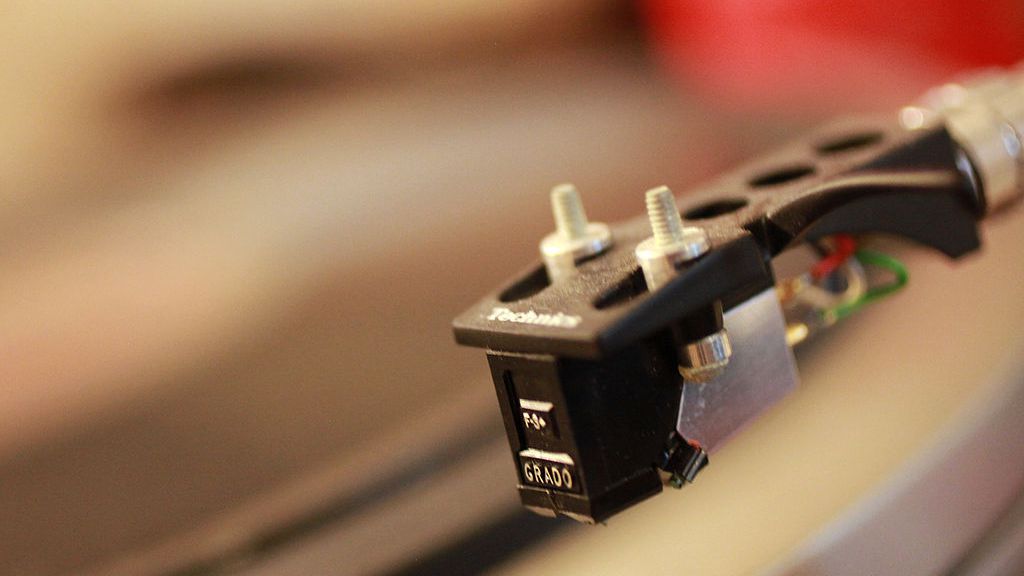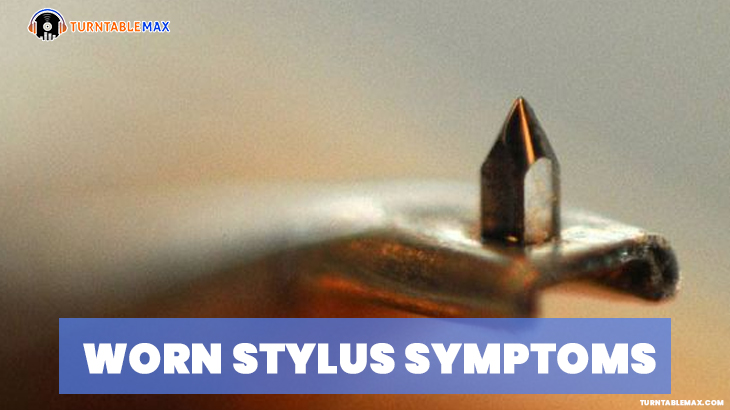For a vinyl enthusiast, especially when new to the world of turntables, knowing when to change the needle (also sometimes called a diamond or stylus) on your record player is a key question that one is not aware of.

If you are asking yourself this question, you have come to the right place! In this article, our analog audio specialists give you information on worn stylus symptoms that will help you know how often you should change the needle on your turntable.
FEW WAYS TO FIND TURNTABLE’S WORN STYLUS SYMPTOMS
Since it is not always easy to estimate your listening hours, this should not be the only data to consider, here are some other tips to help you know if you need to get a new needle.
THE LIFE OF A TURNTABLE NEEDLE
The phono cartridge needles currently available on the market can have a life expectancy ranging from 400 to 1200 listening hours. This varies depending on the manufacturer and the type of materials they use.
To find out whether your needle needs to be replaced, you can take an average of your vinyl listening time per day and estimate how many hours your needle is used. If it had already passed the manufacturer’s advertised lifespan, it might be time to change it.
But beware, your needle may need to be replaced even if it has not yet reached its lifespan since certain factors such as dusty discs and bad calibration can accelerate its degradation.
A VISUAL INSPECTION OF YOUR NEEDLE
If you have access to a high-powered magnifying glass, you can examine your needle closely for signs of premature wear. Be careful of jagged edges or bends in the needle head.
If there is black residue on the needle, it may be a sign of overuse or lack of maintenance. Your diamond will likely need a good cleaning or will simply need to be replaced in such an event.
TRUST YOUR EAR
If the sound quality from your turntable is not as good as it used to be, then some possibilities could cause severe damage to your needle. A good way to find out is to put a disc you are familiar with (it probably better not be very valuable, just in case). If it is indeed the wear of the diamond that affects the sound of your record, the sound will probably be muffled or distorted.
If your needle is badly worn, you may also find the upper mids and highs more difficult to discern, or you may have lost the clean “ting” of a cymbal. Also, be aware of a whistling or background noise on a LP record when there was none before.
All of these sound clues can therefore tell you that you should change your turntable needle.
DOES YOUR NEEDLE JUMP? CHANGE IT!
If the needle jumps or comes out of the grooves, you will certainly damage your record by continuing to listen, so remove it as soon as possible and do not restart your turntable until you have replaced it.
TIP TO EXTENT STYLUS LIFESPAN:
Optimizing the cartridge’s lifespan starts from maintaining the discs and the diamond. Systematic cleaning of records before and after playing not only increases the lifespan but also gives its charm to listening to vinyl records. Whether you are a professional DJ or simply using the turntable at home, taking your time to clean the turntable and vinyl record is an essential part of the maintenance process.
Cleaning the disc with a Carbon fiber brush helps to get rid of dust and particles on the disc’s surface. Also, these particles are responsible for the premature wear of the diamond.
CONCLUSION
Real high-precision devices like turntables are made up of many elements, each playing a crucial role in signal reproduction. A key element when it comes to the performance of a turntable is the diamond. As small as it is, the latter fulfills the essential function of translating the record’s grooves into music. Changing the diamond might be the solution, but you should know when to change it. This article will thus help you to find the worn stylus symptoms.

